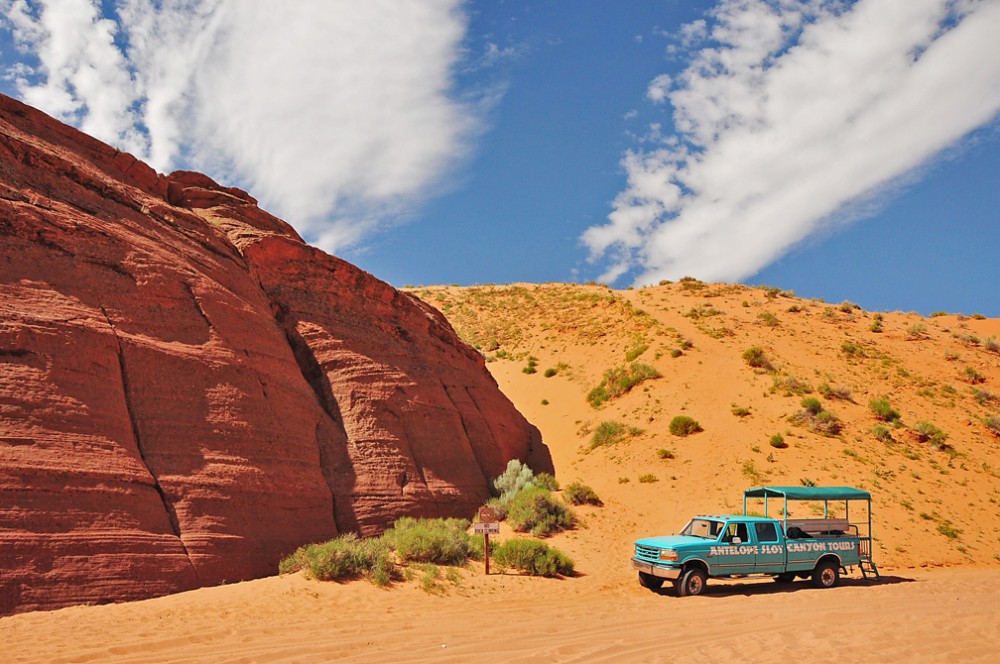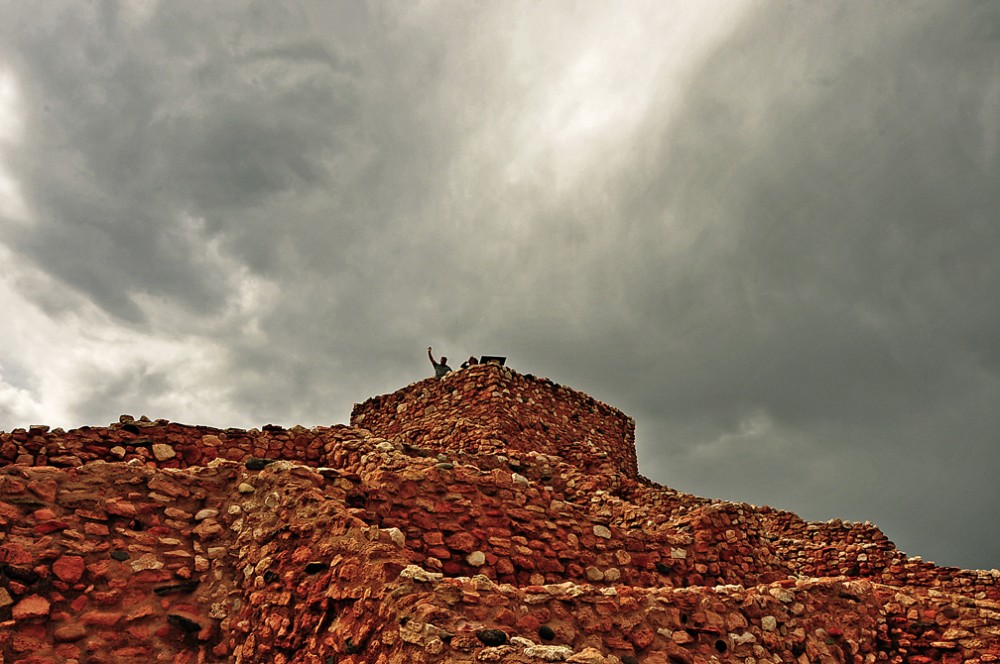After I was able to take my eyes away from the majestic mountains of rocks and never ending sky, I saw another aspect of The Grand Canyon. In every little corner there was life. If you weren't paying enough attention, you could almost miss it. But if you were patient, you could adjust your eyes to see past the camouflage of a little lizard.
Above me, I saw big crows that flew right out of the Alfred Hitchcock movie, “The Birds”. My parents and I ventured into the Navajo Reservation, just outside of the national park. There was a small pottery shop in the middle of the highway. My parents and I stopped because behind the shops was an amazing view of strange rocks, different from within the Canyon. Soon, we discovered that those rocks were completely covered with different fossils. Some looked like little sea shells, while others looked like dinosaur imprints. We asked the people who worked near the highway about it. They smiled at our ignorance and amazement, and said that this area was full of fossils. Imagine that. Out of nowhere, in the middle of the desert are thousands of remains from past giants who roamed Earth millions of years ago.
This is when things changed for me on this trip. Somehow, the existence of these creatures from the past made me feel like I belonged. I felt that Earth existed before me, and will exist way after me. And that I am just a tiny being privileged enough to pass through this planet and witness this particular time in history. Once we left, I found out that my parents had arranged to fly over the Canyon the next day, and we were also take a boat on the Colorado River.
As we flew over the lands that belong to Native Americans, I began to feel small and naive. I had no idea about the people who lived in the little dotted desert towns below. I wondered and imagined what it was like to be a Native American today.
Before taking the boat, we took a Jeep to Antelope Canyon, the place of the Navajo ancestor Koko Peli. Because the Jeep filled up quickly, I thought I'd have to wait for the next round, but instead the tour guide offered to give me a ride in the front with him. It turns out that he was my age and we easily struck up a conversation about college. He was from the Navajo Reservation and taught me a lot about his people.
Towards the afternoon, we finally reached our boat at the bottom of the Canyon. I sat on the edge of our boat, where the waves splashed way above my head, and I thought I'd fall off several times. Yet, for the first time ever, I wasn't afraid of the water. Again, I felt this sense of belonging with nature as I witnessed the most incredible boat ride any one can imagine.
It was quiet at the bottom. Only when you hit an underwater rapid the silence broke with roaring water. Occasionally, birds chirped and flapped their wings. I kept my feet in the water the entire time, since I was as close to the edge of the boat as you can get. Below me, the water change from Caribbean green to Arctic ice-blue. There were visible paths on the beaches by the river and going down the sides of the Canyon that were created by Natives 5,000 years ago. We stopped at one of those paths, and again I let my imagination roam; what would a Native American from the past tell me about this path, I wondered?
Many other things happened on this trip that opened my eyes to the struggles of the Native Americans we briefly study in school. Now, I am hungry for more. Before we left, I bought a couple of books on the different tribes in the area. All I want after college is to go back to Arizona and get to know people there while documenting my experience. Eventually, I'd like to learn about the Havasupai tribe, which just got some of their lands back in the recent decade. They now live partially on the bottom of the Grand Canyon.
This project illustrates my experience with The Grand Canyon's vastness, and a small taste of the Native American culture there. This is the beginning to a life long fascination.



















